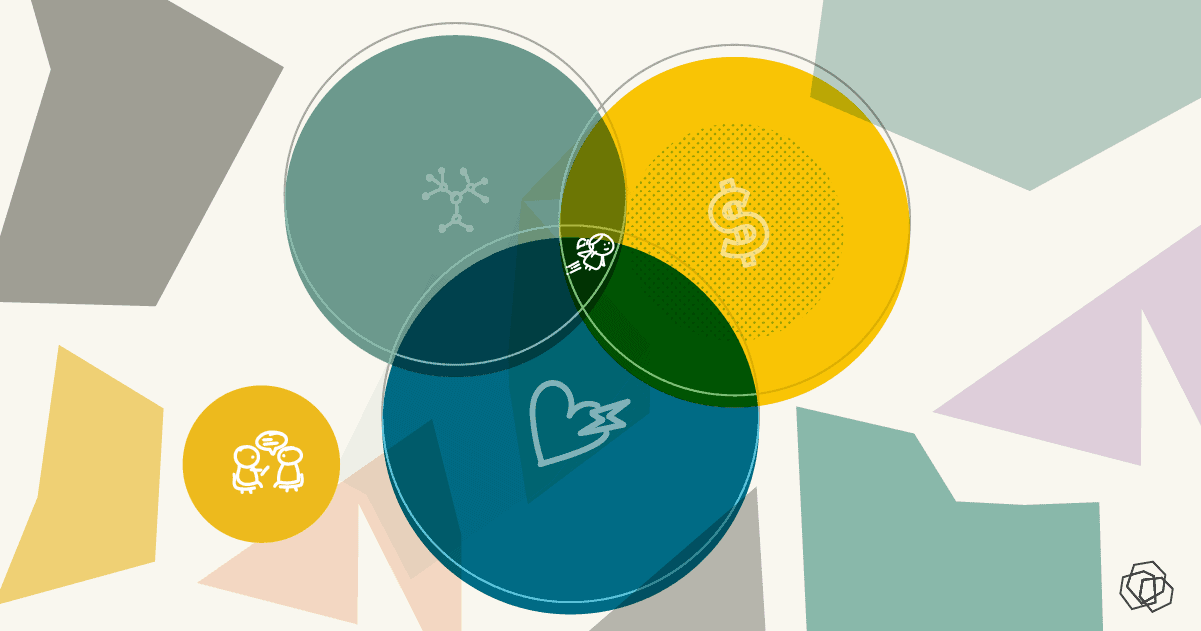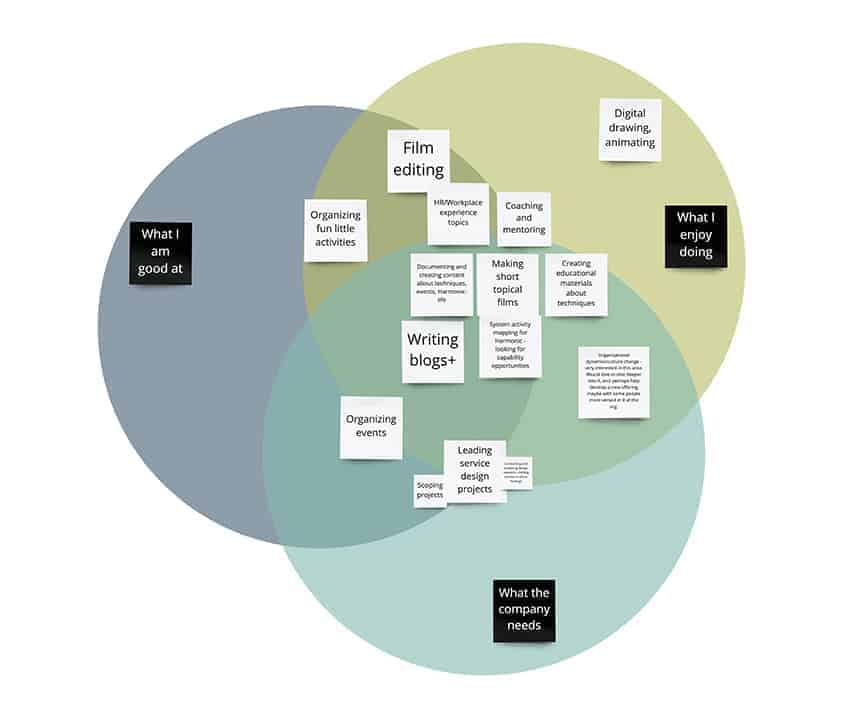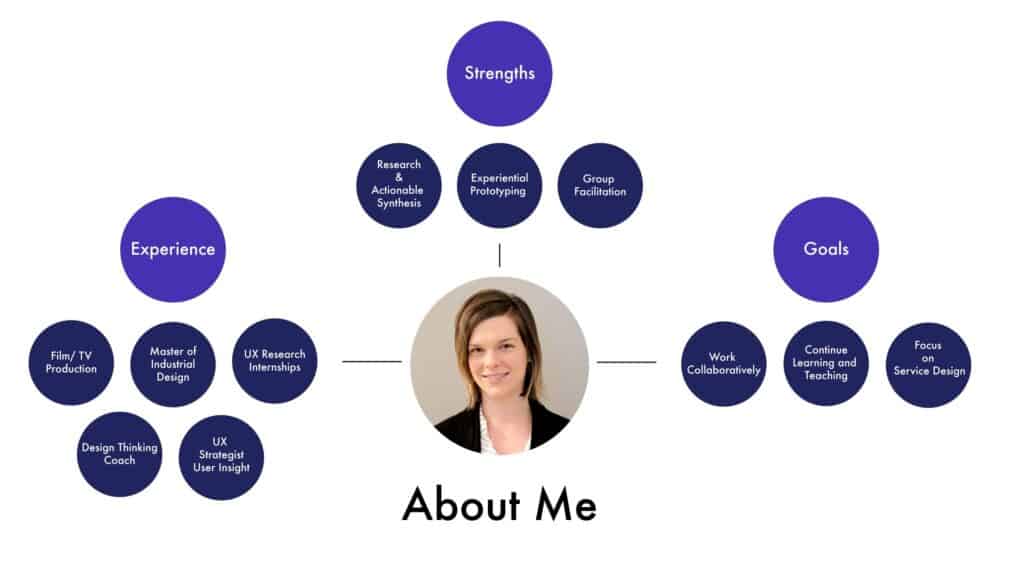
Making a career transition is hard. Most service designers have had to make the leap from one career path to another or from student to professional. This can be challenging and even painful. Changing your career can take some time and even a few false starts until you find the right fit. Over the years, I found a process that helped me know when it was time to make a career move and communicate my intentions effectively. I enjoy sharing this with students and career changers looking for a way to strengthen the way they talk about themselves and thought it might be helpful to those who come across the Harmonic blog interested in getting into service design or even joining our team.
There are some moments in your career development where it’s necessary to talk about yourself. I know I’m not alone in the fact that these moments make me very uncomfortable. When I can see one of these moments approaching I feel dread. Anxiety. Panic. How do I get the message across that I think I’m right for the (team, role, seat in the classroom, etc.) but also not sound arrogant, full of myself, boastful? Whether it’s an application to grad school, a job interview, an annual review with the boss–these interactions can be hard.
The game-changing piece of advice I received when I was applying for jobs after grad school was this: know your story, rehearse it, and tell it with intention. One of my favorite things I get to do as a designer is to organize information into frameworks and then build a story to communicate this information. Applying this to how I approach these conversations has done a lot to decrease my anxiety and has led to favorable results.
Many people come to service design as I did, with a background full of career experiments, lateral moves, even U-Turns. If this is your story, consider yourself lucky, you will have a lot to work with.
The first thing I do as I’m gearing up to craft my story is to make a list of the major phases in my life and what I learned or what skills I gained from each situation. If you have a more linear career path, think outside of your career and look for other experiences that have shaped you as a professional. For example, I grew up in Minnesota; I know how your eyeballs can freeze when you’re on your way to starting the car… I developed grit at a young age. I went to film school; I developed a critical lens and learned the craft of storytelling. I am a former union member; the nature of work and its connection to wellbeing are topics dear to me. I wouldn’t put any of these things on my resume, I might not even discuss them in an interview, but as I build this list I am beginning to get a deeper sense of my own values and where they originate, and this helps me prepare to tell my story. One exercise to get started is to break your life up into five-year segments and write a little bit about experiences that shaped your life and what you learned from them in each phase.
Next, I am a big fan of something I found on the internet called a “diagram of purpose,” sometimes referred to as the “Zunzunaga diagram,” to give credit to Andres Zunzunaga who created a version of this in 2012. It is a framework to inspire introspection about the overlap between what one finds fulfilling at work and how they can be most useful/profitable with the time and energy they choose to devote to profit-procuring activities. I highly recommend filling one out if you have never done so before. I believe that the best time to do this exercise is when you are not seeking a specific life change. If you do this right before you’re about to apply to a new job, you may not be as honest with yourself as you would otherwise, and you might inadvertently shape your attributes to fit the desired job description. It’s best to do this the other way around – introspect first, then find the right role for you.
I have seen versions of this framework at different levels of granularity and recently used a simplified version. Below is the one that I used recently when considering what kind of internal projects I might want to volunteer for at Harmonic (this is therefore biased by that lens, which is not ideal, but sometimes necessary). The key point with this is that frameworks such as these can help you dig deeper into an understanding of what makes work fulfilling to you, not so much that you follow a specific framework to the T.

Finally, if you are doing this introspective work because you want to market yourself in an interview or application, it’s important to be able to take this wealth of information and tell a simple story. Here is a graphic I used as the front page of my portfolio when I applied to Harmonic Design. It’s not a beautiful graphic, but it did help me tell my story. I talked through it from left to right, touching on:
At the end of my presentation, one of my interviewers said “Well, I had some questions I was going to ask you but you pretty much answered all of them in your first slide.”

Sometimes you just know you need to make a change, or maybe it’s naturally time to take the next step in your career. I know first-hand that these can be ambiguous, even painful moments to face. I hope this process can help you find a direction that fits you as much as you fit it and write the next chapter of your unique professional story.